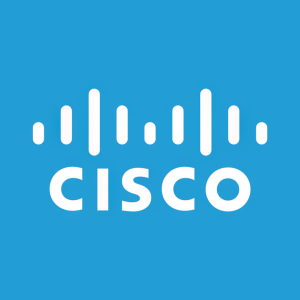Cisco’s Sustainability 101: How Smart Buildings Help the Planet and People
Do you feel a bit lost when people refer to certain environmental sustainability topics and aren't sure where to start when it comes to learning more? Sustainability 101 is a blog series that you can turn to for information about different environmental sustainability terms that may come up at work, during discussions with friends, and even at your annual holiday gathering.
NORTHAMPTON, MA / ACCESSWIRE / June 14, 2023 / Have you heard the phrase "Smart Building" in recent meetings or in the news and wondered what it meant? This blog will explain the ins and outs of smart buildings and how Cisco technology fits in.
What is a Smart Building?
According to a CommScope article hosted through the US Green Business Council (USGBC), a smart building "collects data from multiple systems and devices and shares that information so that action can be taken to improve business process, operational efficiency, sustainability, health and occupant safety, and user experience." In essence, a smart building can take the data from its various building systems to make changes in real time.
The term intelligent building has been around since the 1980s, when spiking energy prices helped crystalize the need for and development of automated building systems. The internet boom of the 90s and early 2000s saw the transformation of intelligent buildings into smart buildings, thanks in large part due to the connectivity made possible by the internet.
According to the International Energy Agency (IEA), "in 2021, the operation of buildings accounted for
What are the benefits of a Smart Building?
The real benefit of a smart building lies in how you use the collected data. Smart buildings can enable:
Lower energy costs. Smart building design can help save money and reduce the emissions of energy-intensive systems like Heating, Ventilation, and Air Conditioning (HVAC) and lighting. How? As one example, buildings with connected HVAC, security, and occupancy systems can modify temperature based on when employees enter and leave the office. This means heating and air conditioning will only be running when necessary.
Lower operational costs. A similar scenario plays out when you provide facility management teams with smart building data. Sensors that monitor how often a door is opened can provide valuable information to a janitorial team scaling their operations, for example. Instead of cleaning every conference room and restroom on the floor, teams can focus on only the rooms that need to be cleaned, saving time, money, and resources.
Greater flexibility. A well-designed smart building can be future proof. When designed with interoperability in mind, building systems can adjust to future technology evolution and adoptions.
How does Cisco influence Smart Buildings?
Cisco has an important role to play in the expansion of smart buildings. Cisco is leading the way with technology solutions such as Catalyst 9000, Power over Ethernet (PoE), and Cisco devices and spaces.
- Catalyst 9000 provides the network upon which building systems and IT services converge.
- With PoE, devices are able to share data and power connectivity over a single Ethernet cable, helping to streamline infrastructure and simplify operations.
- Cisco devices such as the Room Navigator provide datapoints that allow HVAC and lighting systems to be modified based on occupancy. And, when connected with sensors and Cisco Spaces, devices allow users the ability to modify a room to their liking.
- Cisco Spaces provides the visualization of building system data that allows users to make decisions. Employees and visitors are empowered to make decisions on where to work based on how busy or temperate rooms are.
Smart buildings play a fundamental role in helping owners and operators better understand and reduce the energy used in spaces, while increasing occupant comfort and satisfaction. Cisco's Collaboration Centers are digitally enabled, efficient workspaces that use Cisco devices and networks to create a comfortable, safe, and inspiring environment for customers and employees to meet. The redesign of our Penn 1 building in New York City uses PoE capabilities and Cisco video endpoints to monitor and measure occupancy, space utilization, indoor air quality, energy usage, and security. This helps to reduce our expenses and energy use, and serves as a model of how smart building technology can be successfully integrated.
You can explore the full portfolio of Cisco smart building solutions and associated use cases at Cisco Smart Building Solutions and Cisco portfolio for smart buildings.
Willing to learn and engage more on environmental sustainability? In the next blog in our series, we will share more about IT and climate change.
Information regarding Cisco's environmental, social, and governance (ESG) initiatives, goals and commitments, our latest impact, as well as policies and additional disclosures for specialized audiences, can be found in our 2022 Cisco Purpose Report and supplemental information in our ESG Reporting Hub.
View original content here

View additional multimedia and more ESG storytelling from Cisco Systems Inc. on 3blmedia.com.
Contact Info:
Spokesperson: Cisco Systems Inc.
Website: https://www.3blmedia.com/profiles/cisco-systems-inc
Email: info@3blmedia.com
SOURCE: Cisco Systems Inc.
View source version on accesswire.com:
https://www.accesswire.com/761230/Ciscos-Sustainability-101-How-Smart-Buildings-Help-the-Planet-and-People







